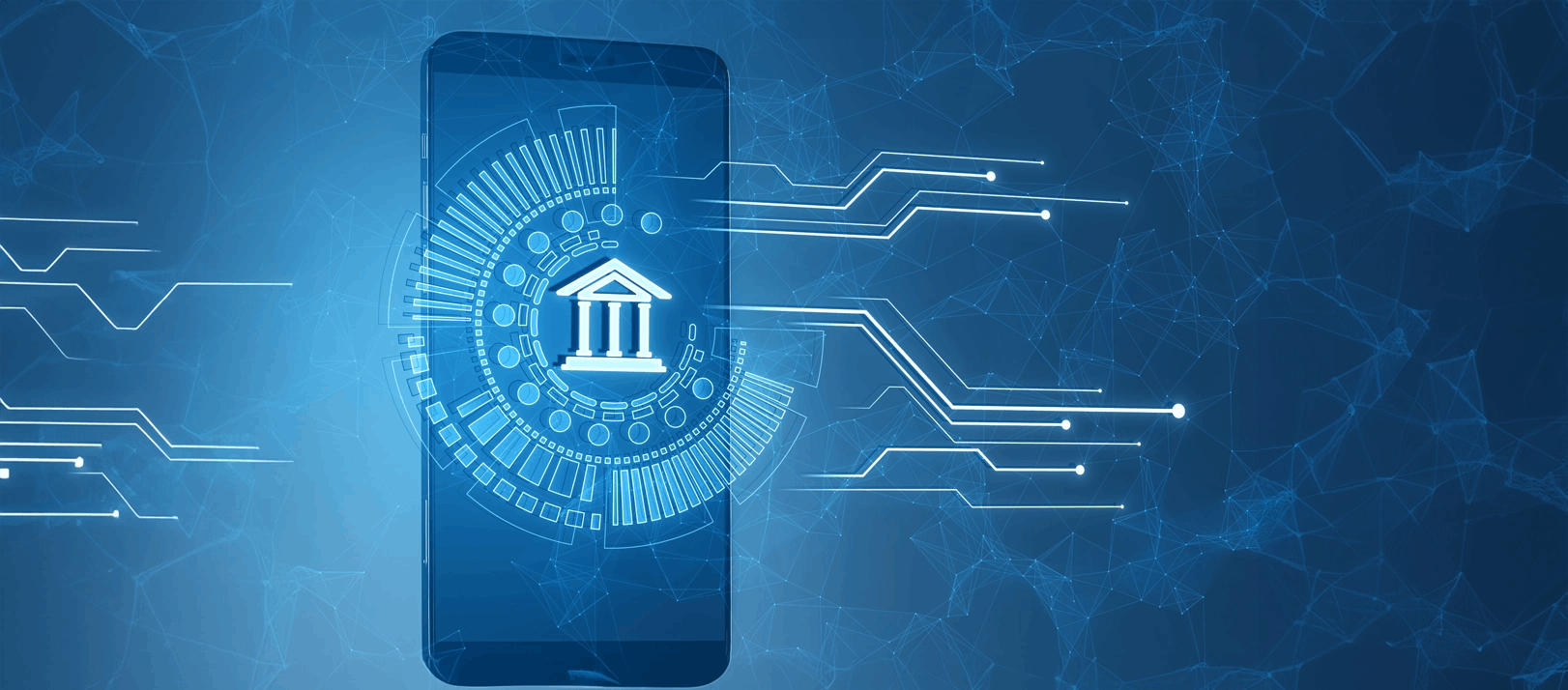
,
TL;DR
- In 2025, must follow AML compliance for neobanks while still providing smooth digital customer experiences. These rules are complicated and change all the time.
- Some important changes to the rules are FATF's new rules for digital assets, US FinCEN's rules for beneficial ownership, and the EU's 6AMLD implementation, which will change how transactions are monitored.
- The basic compliance structure includes assessing customer risk, KYC/due diligence, monitoring transactions in real time, screening for sanctions, and making full reports.
- AI in fintech changes how AML compliance works by using machine learning to monitor transactions, automatically score risks, and manage alerts in a smart way that cuts down on false positives by 60–80%.
- Cloud-based, API-first solutions that work with core financial systems and can be used in more than one place should be at the top of the list for technology stacks.
- If you don't follow the rules, you could face fines of millions of dollars, restrictions on your business, and even jail time for directors.
- When a business works in multi-jurisdictional operations, it needs a hybrid compliance model with a centralised technological infrastructure and personnel that are based in each area.
- Investing in strong AML systems usually costs 5–10% of annual sales, but it stops considerably bigger fines and makes long-term international growth possible.
Introduction
In 2025, one of the biggest problems for digital banks is AML compliance for neobanks. As regulators around the world become increasingly stringent in their efforts to combat financial crime, neobanks must navigate an ever more complex set of Anti-Money Laundering (AML) rules while maintaining the smooth user experience that distinguishes them from traditional banks.
The stakes couldn't be higher. In 2024, authorities around the world fined financial institutions more than $5.1 billion for AML-related issues.
Digital banks were under the most scrutiny. For neobanks that are quickly expanding across borders, knowing and following strong AML compliance standards isn't just about avoiding fines; it's also about developing businesses that can survive in a regulated environment.
This tutorial covers everything neobanks need to know about following AML compliance for neobanks in 2025, from changes in the law to ways to put them into practice.
What is AML Compliance and Why Neobanks Face Unique Challenges
Anti-Money Laundering (AML) compliance is the system of rules, laws, and processes that stop banks and other financial institutions from helping people launder money. These standards are hard for neobanks in a way that they aren't for traditional banks.
Neobanks have to construct their compliance systems from scratch while growing quickly, unlike traditional banks that have had decades to build theirs. Because neobanks are digital-first, all transactions, account openings, and client interactions happen online. This means they need advanced automated monitoring systems.
Key AML Requirements for Digital Banks:
- Enhanced Due Diligence (EDD) and Due Diligence for Customers (CDD)
- Know Your Customer (KYC) verification steps
- Reporting suspicious activity (SAR) to the right people
- Transaction monitoring solutions for unusual patterns
- Record-keeping and audit trail maintenance
- Staff training and compliance program management
When neobanks work in more than one jurisdiction, the problem gets worse. Every country has its own rules for AML, how to report it, and how to enforce it. What works for AML compliance in the UAE might not be good enough for the US FinCEN or EU rules.
A 2024 Thomson Reuters survey found that 89% of compliance officers in digital banks identified dealing with complex rules across borders as their biggest challenge.
Global AML Regulatory Updates Affecting Neobanks in 2025
The regulatory landscape for AML compliance for neobanks has evolved significantly in 2025, with major updates from key jurisdictions that digital banks must understand.
FATF's Enhanced Digital Asset Guidelines:
The Financial Action Task Force (FATF) has made its suggestions about digital payment systems and virtual assets stronger. Neobanks that handle blockchain and cryptocurrency transactions now have to follow stricter rules for reporting and have additional obligations for keeping an eye on things.
US FinCEN Developments:
- New beneficial ownership reporting requirements under the Corporate Transparency Act
- Enhanced SAR filing thresholds for digital transactions
- Stricter Real-Time AML Monitoring requirements for cross-border payments
- Updated guidance on AI in finance applications for compliance
EU AML Package Implementation:
Neobanks are now fully covered by the EU's sixth Anti-Money Laundering Directive (6AMLD), which brings
- Increased predicate offenses, such as environmental and cybercrimes
- Enhanced penalties for compliance failures
- Stricter requirements for transaction monitoring solutions
UAE Central Bank Updates:
- New AML/CFT Decision for licensed financial institutions
- Enhanced customer risk assessment requirements
- Mandatory implementation of automated AML compliance systems
- Stricter sanctions screening protocols
UK and Post-Brexit Changes:
Following Brexit, UK neobanks face evolving requirements, including enhanced Economic Crime Levy obligations and updated Proceeds of Crime Act applications.
These regulatory changes require that neobanks must continue to update their compliance frameworks. Static approaches to AML work are no longer sufficient in today's dynamic regulatory environment.
Essential AML Compliance Framework for Digital Banks
Building an effective AML compliance framework requires neobanks to address five core components systematically. Each element must work together to create a comprehensive defense against financial crime.

1. Customer Risk Assessment and Profiling
Every customer relationship starts with proper risk assessment. Neobanks need robust systems to evaluate:
- Geographic risk based on customer location and transaction patterns
- Product and service risk associated with different banking products
- Customer risk, including PEP (Politically Exposed Persons) screening
- Delivery channel risk for different digital onboarding methods
2. Know Your Customer (KYC) and Due Diligence
Digital KYC processes for neobanks need to be both complete and easy to use:
- Identity verification using government-issued documents
- Address verification through utility bills or bank statements
- Biometric verification, including liveness detection
- Source of funds documentation for high-risk customers
- Ongoing monitoring of customer profiles and behavior changes
3. Transaction Monitoring and Suspicious Activity Detection
This is where Real-Time AML Monitoring becomes crucial. Neobanks need systems that can:
- Keep an eye on transactions in real time across all platforms.
- Use rules and criteria based on risk
- Detect unusual patterns using machine learning algorithms
- Generate alerts for manual investigation
- Maintain detailed audit trails for regulatory reporting
4. Sanctions Screening and Watchlist Monitoring
Comprehensive screening against:
- OFAC (Office of Foreign Assets Control) lists
- UN Security Council sanctions lists
- EU consolidated sanctions list
- Local jurisdiction sanctions lists
- PEP and adverse media databases
5. Reporting and Record Keeping
The right infrastructure for reporting and documenting includes:
- Reports of suspicious activity (SAR) to the right people
- It was necessary to file Currency Transaction Reports (CTR).
- Cross-border payment reporting
- Frequent reporting of compliance to the board and authorities
Modern AML solutions for neobanks combine all of these parts into single platforms that can expand with the firm.
Read more:
AI in Fintech: The Ultimate Guide for Innovators
AI in Banking: Applications, Benefits and Examples
AI in Credit Scoring: Unlocking Lending for Underbanked Markets
Choosing the Top 10 Fintech Development Companies for AI-Driven Growth
How Generative AI is Changing Financial Services
AI-Powered Fraud Detection: What Fintech CTOs Need to Know
Neobank 3.0: How AI Is Redefining Digital Banking in Fintech
The Basics of Selecting the Right Fintech App Development Partner
Neo Banking vs Traditional Banks: Who Wins the Fintech Innovation Game?
How AI and Automation Transform Neobank AML Compliance
AI in fintech has changed how neobanks deal with AML compliance, going from systems based on rules to smart, flexible frameworks that get better over time.
Machine Learning for Transaction Monitoring
Traditional rule-based systems generate excessive false positives, with some banks reporting alert rates above 95%. AI in finance applications reduces this dramatically by:
- Learning from historical transaction patterns
- Adapting to customer behavior changes over time
- Identifying complex money laundering schemes that rules-based systems miss
- Reducing false positive rates to under 10% for mature implementations
Automated Customer Risk Scoring
Intelligent AML automation can assess customer risk more accurately by analyzing:
- Transaction velocity and amounts relative to the customer profile
- Geographic patterns and cross-border activity
- Network analysis of connected accounts and relationships
- External data sources, including social media and public records
Natural Language Processing for Document Review
NLP capabilities help neobanks process:
- Customer-provided documentation for inconsistencies
- News and adverse media monitoring
- Regulatory updates and sanctions list changes
- Internal communications for compliance violations
Real-Time Decision Making
Real-Time AML Monitoring and Detection powered by AI enables:
- Instant risk assessment for high-value transactions
- Dynamic customer risk score updates
- Automated approval or flagging of suspicious activities
- Immediate regulatory reporting when thresholds are met
Benefits of AI-Driven AML Compliance
- 60-80% reduction in false positive alerts
- 40-50% faster case investigation and resolution
- 90%+ improvement in suspicious activity detection rates
- Significant reduction in compliance operational costs
However, using AI development to help with AML involves careful thought about how easy it is to describe the model, getting permission from the government, and making sure the model is still valid.
AML Technology Stack: Tools and Solutions for Neobanks
Selecting the appropriate technical infrastructure is essential to maintain long-term AML compliance for neobanks. A modern AML tech stack usually consists of a number of integrated parts.
Core AML Platform Requirements:
- Real-time transaction monitoring with customizable rules and ML algorithms
- Customer risk management with automated scoring and profiling
- Sanctions screening with real-time list updates and fuzzy matching
- Case management for investigation workflows and documentation
- Regulatory reporting with automated SAR and CTR generation
Integration Capabilities:
Modern AML solutions for neobanks must integrate seamlessly with:
- Core banking systems and transaction processing
- KYC and customer onboarding platforms
- Tools for business intelligence and data warehousing
- Systems for risk management and fraud prevention
- Regulatory reporting and communications platforms
Cloud vs. On-Premises Considerations:
Most neobanks opt for cloud-based transaction monitoring solutions because they offer:
- Faster deployment and time-to-market
- Automatic updates and regulatory compliance maintenance
- Scalability to handle transaction volume growth
- Lower upfront infrastructure costs
- Built-in disaster recovery and business continuity
Popular AML Technology Vendors:
- Enterprise Solutions: NICE Actimize, SAS AML, IBM Safer Payments
- Mid-Market Options: ComplyAdvantage, Quantexa, Featurespace
- Neobank-Focused: Hawk AI, DataVisor, Feedzai
- Open Source/Custom: Apache Kafka for data streaming, TensorFlow for ML models
API-First Architecture Benefits:
Neobanks benefit from API-first AML platforms that enable:
- Rapid integration with existing fintech software development frameworks
- Flexible customization for specific business requirements
- Easy scaling across multiple products and geographies
- Real-time data sharing between compliance and business systems
Selecting solutions that can expand with your neobank while yet adhering to regulations in every location in which you do business is crucial.
Regulatory Risks and Penalties for Non-Compliant Neobanks
For neobanks, the repercussions of poor AML compliance have gotten worse. Regulators are pointing to digital banks that put expansion ahead of legality.
Financial Penalties and Fines:
- Recent regulatory actions demonstrate the escalating cost of non-compliance:
- Revolut faced a £18.2 million fine from the PRA for AML deficiencies
- N26 received a €4.25 million penalty from BaFin for inadequate transaction monitoring
- Monzo was required to strengthen its financial crime controls following a regulatory review
Operational Restrictions:
Beyond fines, regulators can impose business limitations:
- Customer acquisition caps until compliance issues are resolved
- Geographic expansion restrictions
- Product launch delays pending compliance reviews
- Enhanced reporting and oversight requirements
Reputational Damage:
Public regulatory actions can severely impact neobank growth:
- Reduced customer trust and acquisition rates
- Investor confidence decline is affecting funding rounds
- Partnership and integration challenges with other financial institutions
- Media coverage highlighting compliance failures
Criminal Liability Risks:
In extreme cases, inadequate AML work can lead to:
- Personal liability for directors and compliance officers
- Criminal charges for willful non-compliance
- Deferred prosecution agreements with ongoing oversight
- Complete business license revocation
The Compliance Investment Perspective:
The cost of non-compliance greatly outweighs the substantial expenditure required to maintain strong AML compliance for neobanks, which is normally 5–10% of yearly revenue. Businesses that make early investments in compliance infrastructure frequently discover that it gives them a competitive edge in attracting large clients and investors.
Building Future-Ready AML Compliance for Multi-Jurisdiction Operations
Neobanks' AML compliance systems need to adapt as they grow globally in order to manage several regulatory frameworks at once. This calls for adaptable technological architecture and a strategic approach.
Regulatory Mapping and Harmonization:
Successful multi-jurisdiction operations start with comprehensive regulatory analysis:
- Identifying common requirements across target markets
- Understanding jurisdiction-specific obligations and exceptions
- Planning compliance frameworks that satisfy the highest standards
- Establishing local regulatory relationships and reporting procedures
Centralized vs. Localized Compliance Models:
Centralized Approach Benefits:
- Consistent compliance standards across all markets
- Economies of scale in technology and personnel
- Simplified reporting and oversight for global operations
- Easier compliance program updates and maintenance
Localized Approach Benefits:
- Better alignment with local regulatory expectations
- Faster response to jurisdiction-specific regulatory changes
- Stronger relationships with local supervisors
- Reduced regulatory concentration risk
Most successful neobanks adopt a hybrid model with centralized automated AML compliance infrastructure and localized implementation teams.
Technology Architecture for Global Scale:
Future-ready AML solutions for neobanks require:
- Multi-tenant architecture supporting different regulatory requirements
- Real-time data synchronization across global operations
- Jurisdiction-specific reporting and alerting capabilities
- Scalable infrastructure that handles regional transaction volumes
- Integration capabilities for local banking and regulatory systems
Data Governance and Privacy Considerations:
Cross-border operations must address:
- Data residency requirements in different jurisdictions
- Cross-border data transfer restrictions (GDPR, etc.)
- Local privacy laws affecting customer information sharing
- Regulatory reporting requirements for different supervisors
Compliance Program Governance:
Effective global compliance requires:
- Clear accountability structures for each jurisdiction
- Regular compliance program testing and validation
- Consistent staff training across all locations
- Standardized compliance metrics and reporting
- Regular regulatory change management processes
Neobanks that view AML compliance as a business facilitator rather than a regulatory burden are the ones that can grow internationally.
Conclusion
Ready to build a compliance framework that scales with your neobank's growth? At Codiste, we specialize in fintech software development with deep expertise in AML compliance for neobanks. Our team has helped digital banks across the UAE, US, and EU implement automated AML compliance systems that satisfy regulators while enhancing customer experience.
From AI development for intelligent transaction monitoring to comprehensive AML solutions for neobanks, we understand the unique challenges facing digital banks in 2025. Let's discuss how we can help you build a compliance infrastructure that becomes a competitive advantage.



Top Industries Benefiting from AI Voice Assistants in Customer Service
Know more
Building a Compliance-First Neobank: Tech Stack, AI Models, and Regulatory Architecture
Know more
